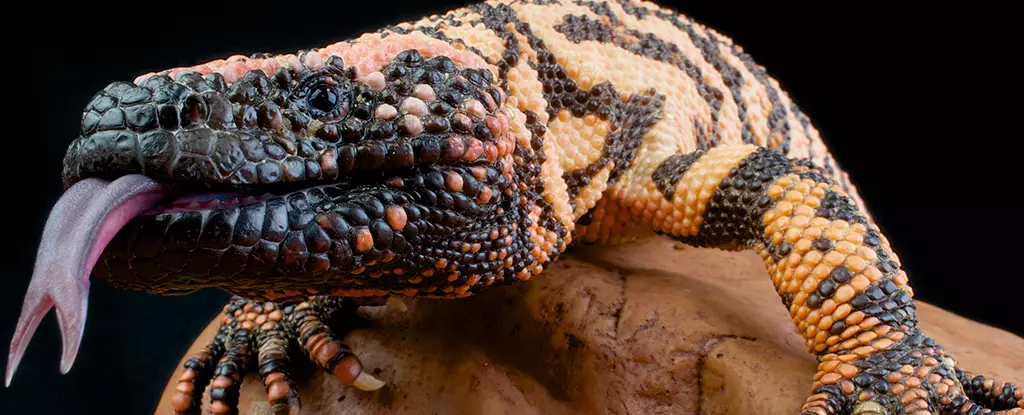The natural world constantly uncovers hidden treasures that have the potential to revolutionize medical science. From venomous reptiles to ancient sea life, these seemingly dangerous organisms have inspired innovative treatments that save lives. This article explores how toxic substances from the animal kingdom have shaped modern medicine, focusing on several notable examples that highlight nature’s unparalleled ability to produce life-saving compounds.
At first glance, the Gila monster, one of the world’s few venomous lizards, may seem like an unlikely hero in medical advancements. Yet, within its venom lies a potent ingredient that has been integral in the development of glucagon-like peptide (GLP-1) agonists, specifically drugs like Ozempic and Wegovy, which are now widely used in managing type 2 diabetes and obesity.
Endocrinologist Daniel Drucker’s research in the late 20th century, driven by the quest for a hormone that mimicked the appetite-suppressing and blood-sugar-regulating effects of human GLP-1, led him to the Gila monster’s venom. Collaborating with other scientists, Drucker identified Exendin-4, a protein that closely resembles GLP-1 but remains active in the human body much longer. This breakthrough not only led to the synthetic formulation of Exendin-4 but also provided a pathway for FDA approval in 2005, showcasing the potential for nature to inform effective treatments for chronic conditions.
From Serpent Venom to Cardiovascular Solutions
The Brazilian viper is another remarkable creature linked to significant medical breakthroughs. From its venom, scientists have isolated a compound that led to the creation of Lisinopril, a drug commonly prescribed for high blood pressure and heart-related ailments. This medication works by inhibiting enzymes that cause vasoconstriction, thus promoting relaxed blood vessels and improved blood flow.
The irony, however, should not be lost; a drug derived from an animal’s lethal venom is saving countless lives from cardiovascular issues. This dichotomy reinforces a profound truth: sometimes the most effective solutions to human ailments arise from the very things that could threaten us.
Not all medical miracles come from reptiles; some trace their lineage back to the oceans. The Caribbean sponge, Tectitethya crypta, has garnered attention for its unique nucleosides, compounds that provide it with defense mechanisms against pathogens.
These nucleosides became the inspiration for cytarabine, a critical chemotherapy drug used to treat non-Hodgkin’s lymphoma and leukemia. As a part of the World Health Organization’s List of Essential Medicines, cytarabine aids countless patients in their fight against cancer. The sponge’s natural ability to fend off foreign invaders is a testament to evolutionary ingenuity, highlighting that solutions to human health crises can emerge from the most unsuspecting sources.
Scorpion Venom: Illuminating the Dark Side of Cancer
The alarming prospect of cancer is a challenge that modern medicine grapples with daily. In a compelling case, oncologist Jim Olson sought to improve visualization during tumor removal surgeries. His efforts culminated in the discovery of a peptide from the venom of the deathstalker scorpion, which possesses properties that enable it to bind specifically to brain tumor cells without affecting normal cells.
The result was the creation of Tozuleristide, a molecular compound that “paints” tumors with fluorescence under near-infrared light. This innovation allows surgeons to detect small clusters of cancer, previously invisible to the naked eye, thereby improving surgical outcomes and patient prognoses. Olson’s journey highlights the importance of interdisciplinary research, combining toxicology, molecular biology, and medical practice.
The rich tapestries of the natural world have long been a source of medicinal inspiration, reflecting how life in its myriad forms can offer solutions to humanity’s most pressing health concerns. From Gila monster venom contributing to diabetes treatments to marine sponges aiding in cancer therapies, these examples underscore a humbling truth: nature harbors answers that can improve and prolong human life.
However, as we become increasingly reliant on these biological treasures, we must also advocate for the conservation of the habitats and species that provide them. The balance between pharmaceutical innovation and ecological preservation is vital, as it ensures that future generations will continue to find healing in the unexpected places offered by the natural world. As we delve deeper into this exploration, we remain hopeful that further discoveries await, hidden within the toxic secrets of the animal kingdom.


Leave a Reply